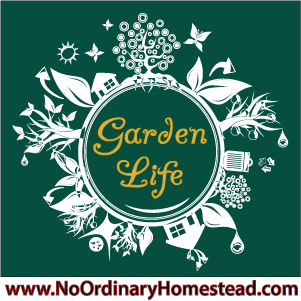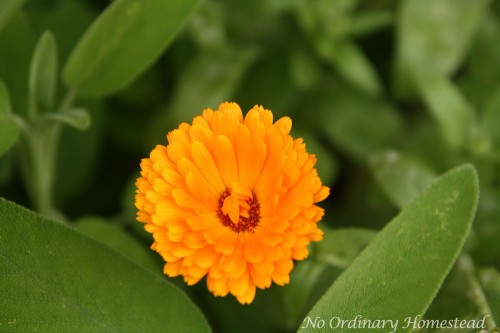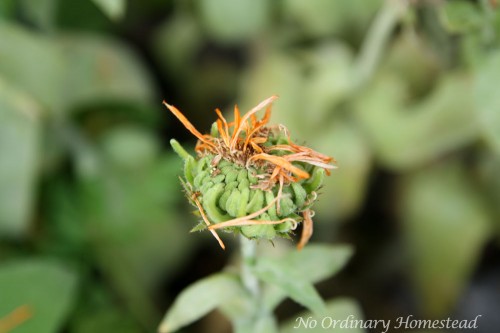Happy Friday, friends!
Wow it’s been quite a week around here…and there is still much to be done. But staying busy keeps me out of trouble. 😉
The peaches and grapes are now both pretty much ready to harvest. So there’s something to tackle this weekend. And I really need to go buy some soil to put out a few pots so I can start propogating our strawberry plants (paying €1 or more per plant is awful). But the lettuce seeds I planted are all sprouting well and new sunflowers are opening every day, plus we’ve still got a few strawberries and tomatoes on the vine — so I’m still thoroughly enjoying our garden right now.
I also got a sneak peek into the garden of a friend this week who wanted to share some of the spoils of her garden with Mackenzie (namely some of the sweetest, best cherry tomatoes I’ve ever eaten), and realized that she has some wildly ingenious gardening beds in there. So I’m going to be taking my camera with me on dog walks again, in hopes that she invites us in once more and will humor my (strange) request of photographing her garden so I can share it with the world!
A Bit About Calendula
I thought I would share a bit about saving seeds from calendula flowers today, since everyone really seemed to enjoy the saving lettuce seeds post. Calendula (Calendula officinalis), which is often called pot marigold but shouldn’t be confused with regular marigold, is actually a perennial and grows well in sunny spaces…but in colder climates it usually won’t come back. It will often self-sow itself and attracts quite a few unfriendly garden pests like cabbage moths and other larvae, so you don’t usually want it in your vegetable garden.
Calendula has edible flowers and the green leaves are also edible but they’re not so tasty. The petals may also be used to add a saffron-like color to food, but it won’t give it that saffron flavor. In fact, the flowers have a bit of a tangy flavor and you can add them to all sorts of foods like rice, fish or meat soups, soft cheese, yogurt, butter, omelettes, milk dishes, cakes and sweet breads.
Calendula is often found in lotions, and studies have shown that it actually has anti-viral and anti-inflammatory properties. Plus pot marigold is one of only a few plants that has high antiseptic properties despite it being low in tannins. A tincture made of calendula can be used to treat acne, sooth skin irritations and reduce inflammation. It’s also said to help reduce varicose veins, bruising, and heals dry, cracked skin (like on nipples after breast feeding) and chapped lips very well. During the Civil War, Calendula was actually used to treat open wounds on the battle fields.
The petals can also be used to make natural dye. And it’s even fed to dogs to improve digestion and prevent yeast and fungal infections. Plus it’s used in salves for pets because it’s non-toxic.
How to Save Calendula Seeds
If you cut calendula flowers off once they begin to die, your plants will continue to flower for weeks if not months (depending on your growing conditions). But if you want to collect seeds from them for future planting, it’s really quite a simple task.
First, once the flowers have died back, I recommend pulling off the dead petals. They can be quite sticky, and otherwise you will be left with quite a mess…and may not be able to get any seeds off at all.
You’ll be left with a head that looks something like the image below. Now you’ve got a wait about a week until the seeds are ready to come off. It may happen that some of the larger seeds on the outer ring fall off before you get to harvest the seeds. But no worries, you’re going to have plenty more seeds and opportunities for more seed harvesting.
Now comes the tricky part. There is no exact way of just looking at the seed heads to know if they are ready are not. Sometimes they will turn brown and other times they will be completely green still. It’s really a matter of just feeling the seed heads to see how they react.
Using your thumb, brush over the seed head lightly to feel if the seeds feel loose or not. They will literally just break right off the seed head. If they don’t come off on their own, they are not ready. You shouldn’t need to tug on them to get them off.
I tend to sort of cradle the flower head in my hand as I use my thumb, because if the seeds are ready, they will often fall off without warning.
The seeds themselves are rather strange looking, almost like look bugs. They have a curved, almost comma- or apostrophe-like shape to them and the outer seeds will be much larger than the inner seeds. Each seed head probably will give you 30 or more seeds — so you really don’t need to worry about letting all of your flowers go to seed. I’ve already shared quite a few seeds with our neighbors and have more than enough to grow a crop of calendula next year already, so we’ll see what I end up doing with them all. If you’re in Germany and would like some seeds, let me know — I’ll be happy to send you a packet.
Why do I have so many seeds, you ask? Well you see, I didn’t actually know that deadheading calendula would cause it to come back before I started this post today. I’m not an expert on life, I just play one sometimes in Blogland. 😉
Want to join in the garden fun and link to your own blog or images online? You can share about anything related to gardening, old or new posts, from recipes to harvesting to grow reports to DIY projects or inspiration.
Here’s how this works:
PLEASE READ THESE GUIDELINES, especially if you have never linked up before!
- You are free to join the Garden Life link up at any time. You can also skip a few weeks and then come back. It’s entirely up to you.
- Please link directly to a post about your garden, a recipe, a tutorial for gardening, an inspirational idea, etc that relates to GARDENING — not your main blog URL.
- Please only link to your own blog or photos hosted online.
- You MUST link back to No Ordinary Homestead or a Garden Life link up post in your blog post. This way, if someone else wants to join the fun, they can. You can either link with text or using the Garden Life badge.
Below is a code for the badge above. Just copy and paste this code into your post or save and upload the image to your blog:
<a href=”https://www.noordinaryhomestead.com/garden-life-link-up/“><img title=”garden-life-300″ src=”https://www.noordinaryhomestead.com/wp-content/uploads/2011/07/garden-life-300.gif” alt=”garden link up” width=”301″ height=”301″ /></a> - I highly encourage you to visit other participants and leave comments. This is a great way to meet new friends and become inspired about your garden! I try to visit all the blogs participating as well 🙂
That’s it! Share your garden with us by linking up below!
[include_HTML: /wp-content/js/week8.php]









Calendula is one of my favorite healing herbs–so soothing and healing to the skin. I’m still in the process of getting my gardens established in our new home. (We have been here two years. I keep telling myself that next year will be the year to start growing herbs like this one again. Plus, the flowers are so pretty and they bloom until November here.
Great report on the Calendula plant. I never knew there were so many uses for this plant,and so colorful ,too. Your gift of giving information back to your readers is fabulous.I can see why your blog is #1. Can’t wait to see the info on the cherry tomatoes and other garden goodies.
Give Mackenzie a big hug and kiss from us. Stay well and safe.
To save the Calendula seeds, do you cut the flower and let it dry or do you leave the flower attached and let it dry ?
I left the heads on the plant but you can likely cut them as well once the petals fall off. Some may also want to bag the heads if there’s a fear of wind or birds taking off with them.
I have several different colours of pot marigolds and wish to save the seeds,
my question is “Which part of the seed head is the fertile seed”? its just that the head has so many components they can’t all be fertile. or can they?
You want to keep the whole head until the seeds are dried a bit. The seed is attached under the blossom on wispy stem-like seed.
The photo shows green seed. Generally seeds are not viable until after they’ve turned brown on the plant, so I’ve been taught.
It’s important that the flower petals have died off, but calendula seeds will remain greenish long after and in my experience can be harvested just after the petals die off. You can leave seeds on flowers and herbs longer, but may also lose some to birds, wind, etc.
Hi, i grow calendula since 2 years in my garden and harvest my own seeds. Last year i had beautiful large blooms where as this year, the flowers are tiny with less petals. Some seeds are large while some small.
How do we know Difference between good seed and not so good seed.
Is it that the plant is young and so the flowers are small or less nutrition.
I’m confused by the calendula seeds I’ve been gathering from a neighbor’s plants (spilling through the fence onto the public path). They are already dry and easily crumble into my hand when I rub the seed-head. But what I can’t figure out is whether everything I get is a seed or just part of what I get.
I can see that each part of the seed-head like many capital letter C’s around a central point. But on these seeds, inside each capital C there is a little baby c, so the outer spiny C sort of ‘enwombs’ another, more tightly curled, small c. The outer or large C is light and straw-like; the tightly curled inner c is harder, darker and often tightly curled on itself (not as open as a letter c; more like a teardrop shape).
Is the light, straw-like and easily bent and broken outer, large C just some kind of husk? I’ve been throwing that away (it easily blows away) and only saving the harder, more tightly-curled inner C.
Is it two rows of concentric seeds, one curved over the other? I’ve never grown calendula before and have never seen the seeds in a packet.
Hi Nel,
The light, wispy stuff can be discarded. The larger c-shaped pods are the seeds. So you are on the right track!
How about the small tighly curved dark inner ones? Are they seeds and are they more or less viable then the outer larger lighter spikey seeds?